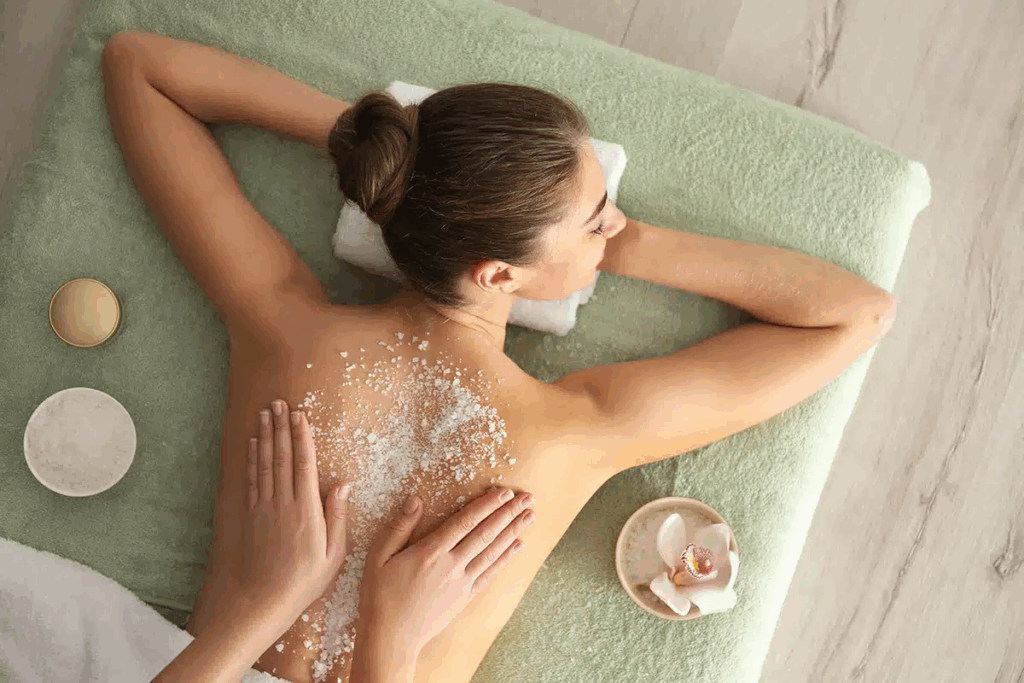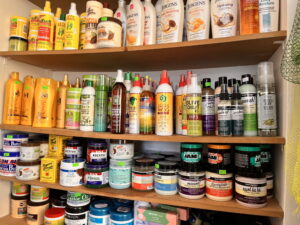Best Salt Scrub for Body: Tips, DIY Recipes & Expert Advice

Exfoliation is a cornerstone of any effective skincare routine, removing dead skin cells, unclogging pores, and revealing a smoother, more radiant complexion. Among the myriad exfoliants available, salt scrubs for body have surged in popularity due to their natural origins, versatile textures, and therapeutic benefits. In this comprehensive guide, we’ll explore everything from understanding what makes a salt scrub unique, to crafting your own DIY salt scrub for body, and choosing the best salt scrub for body that aligns with your skin’s needs. Whether you’re seeking to banish rough patches or simply elevate your self-care ritual, read on for an in-depth look at the world of salt-based exfoliation.
What Is a Salt Scrub?
A salt scrub is a granular exfoliant composed primarily of mineral-rich salts—commonly sea salt, Epsom salt, or Himalayan pink salt—blended with emollient oils and often enhanced with essential oils or botanicals. These coarse particles physically buff away the layer of dead skin cells on the surface, stimulating blood circulation and promoting cellular turnover. Compared to chemical exfoliants like AHAs or BHAs, salt scrubs deliver instant tactile feedback: you can feel the scrub’s grit working on your skin, making the experience both effective and sensorial.
Types of Salt Used in Body Scrubs
Sea Salt
Harvested from evaporated seawater, sea salt is rich in minerals like magnesium, calcium, and potassium. Its medium-to-large granules make it ideal for robust full-body scrubbing. Bath & Body Works’ Sea Salt Body Scrub exemplifies a store-bought option that harnesses these minerals for skin-softening benefits.Himalayan Pink Salt
Mined from ancient salt deposits in the Himalayan mountains, this salt’s fine-to-medium texture and trace mineral content (iron, zinc, copper) impart a gentle exfoliation and a faint rosy hue. Many enthusiasts tout its detoxifying properties.Epsom Salt
Technically magnesium sulfate, Epsom salt features smaller, more irregular granules that dissolve more readily in water, making it suitable for a milder scrub—especially for sensitive areas or those new to physical exfoliation.Table Salt
Easily accessible and budget-friendly, table salt can be used in a pinch but typically lacks the mineral complexity and varied grain sizes that specialized salts provide.
Benefits of Salt Scrub for Body
Removes Dead Skin Cells
The abrasive action of salt granules effectively sheds dull, flaking skin, preventing clogged pores and ingrown hairs.Boosts Circulation
Massaging a salt scrub onto the skin stimulates blood flow, promoting oxygen and nutrient delivery to the tissues for a healthier glow.Promotes Detoxification
Salt scrubs can assist in drawing out toxins and impurities from the skin, leaving it feeling firmer and more toned.Balances Oil Production
By sloughing off excess sebum and clearing pores, salt scrubs help regulate the skin’s natural oil levels, reducing the likelihood of breakouts.Mineral Enrichment
Minerals such as magnesium and potassium support skin barrier function, hydration, and may soothe inflammation.
Salt Scrub vs. Sugar Scrub
| Feature | Salt Scrub | Sugar Scrub |
|---|---|---|
| Grain Texture | Coarser, more abrasive | Finer, gentler |
| Suitable Skin Types | Normal to very oily, rough areas | All skin types, including sensitive |
| Mineral Content | High (sea salt, Himalayan minerals) | Low |
| Dissolution Rate | Slower, remains effective in the shower | Faster, may dissolve before full exfoliation |
| pH Level | Slightly alkaline | Slightly acidic, closer to skin pH |
While sugar scrubs offer gentler exfoliation and natural humectant properties (keeping moisture in), salt scrubs excel at intensive exfoliation and delivering a mineral boost. Many people alternate between both to reap complementary benefits.
How Often Should You Use Salt Body Scrub?
The frequency of use depends on your skin type and the coarseness of the scrub:
Normal to Oily Skin: 2–3 times per week.
Dry or Sensitive Skin: Once per week or every 10 days.
Very Sensitive or Compromised Skin (eczema, rosacea): Biweekly or after consultation with a dermatologist.
Over-scrubbing can lead to microtears, dryness, and irritation, so always listen to your skin’s response and adjust accordingly.
How to Choose the Best Salt Scrub for Body
Grain Size
Fine to medium grains suit most skin types.
Coarse grains target very rough areas (elbows, heels).
Salt Type
Sea salt for balanced mineral content.
Himalayan pink salt for a gentler mineral touch.
Epsom salt for magnesium-rich, mild exfoliation.
Carrier Oils
Look for hydrating oils like coconut, sweet almond, jojoba, or grapeseed oil that replenish moisture.Essential Oils & Botanicals
Therapeutic oils (lavender, peppermint, eucalyptus) can soothe, invigorate, or calm the skin.Brand Reputation & Ingredients
Choose products with transparent sourcing and minimal synthetic additives. For inspiration, see this roundup of the best salt scrub for body by Women’s Health Mag.
How to Use a Salt Scrub on Your Body
Prep Your Skin
Soak in warm water for 5–10 minutes to open pores.
Pat skin lightly—keep it damp.
Apply the Scrub
Scoop a small handful of salt scrub.
Gently massage in circular motions, starting from your feet and working upward (promotes lymphatic drainage).
Rinse Thoroughly
Use lukewarm water to wash off all residue.
Avoid overly hot showers, as they can strip moisture.
Moisturize Immediately
Pat skin dry, leaving a touch of moisture.
Apply a rich body lotion or oil to lock in hydration.
DIY Salt Scrub Recipes
1. Classic Sea Salt Scrub
1 cup sea salt
½ cup coconut oil (melted)
10 drops lavender essential oil
Instructions: Mix ingredients until uniform. Store in a glass jar.
2. Himalayan Pink Salt & Rose
¾ cup Himalayan pink salt
¼ cup sweet almond oil
1 tablespoon dried rose petals, crushed
8 drops rose essential oil
Instructions: Blend salt, petals, and oils. Use within 3 months.
3. Epsom Salt & Mint Reviver
1 cup Epsom salt
½ cup grapeseed oil
6 drops peppermint essential oil
Instructions: Combine all, stir well, and enjoy invigorating minty cleanse.
4. Detox Himalayan + Charcoal
½ cup Himalayan pink salt
½: Whisk salt and charcoal, then oil. Charcoal aids in drawing out impurities.
Precautions and Potential Disadvantages
Over-exfoliation can damage the skin barrier, causing dryness, redness, and sensitivity.
Open wounds or sunburn: Avoid scrubbing until fully healed.
Allergies: Patch-test essential oils to prevent irritation.
Dark spots: While scrubbing can brighten the surface, it may aggravate post-inflammatory hyperpigmentation if too abrasive.
Try Xiangxiang Daily Now!
We Help You Launch New Products, And Continue To Grow. Try Us With 20% Off Your First Order!
Summary
Salt scrubs for the body offer an invigorating, mineral-rich exfoliation that can rejuvenate and smooth your skin. From the coarse grit of sea salt to the gentle touch of Epsom salt, there’s a formulation for every skin type and preference. Whether you opt for a homemade salt scrub for body—a straightforward blend of salt, carrier oil, and essential oils—or invest in a premium commercial product, the key is to balance exfoliation with hydration and to tailor frequency to your skin’s needs. Remember, consistent yet gentle care will yield the healthiest, most radiant skin over time.
Frequently Asked Questions
How often should I use a salt body scrub?
Generally, 2–3 times weekly for normal or oily skin, and once a week for dry or sensitive skin. Adjust based on your skin’s tolerance.
What is the best thing to scrub your body with?
A gentle salt or sugar scrub paired with nourishing oils; choose grain size and ingredients suited to your skin type.
Should I use salt or sugar in a body scrub?
Salt provides stronger exfoliation and minerals, while sugar offers gentler buffing and natural humectant properties. You can alternate or blend both.
Does salt remove dead skin?
Yes, the abrasive texture physically sloughs off dead skin, revealing smoother layers beneath.
Which salt is best for body scrub?
Sea salt for balanced minerals, Himalayan pink salt for gentle mineral infusion, and Epsom salt for magnesium benefits.
Can I use salt scrub on my underarms?
Yes, but choose a fine-grain scrub and be gentle to avoid irritation in this sensitive area.
Is salt scrub good for the body?
Absolutely—when used appropriately, it promotes exfoliation, circulation, and skin renewal.
Can salt remove dark spots?
Mild brightening can occur over time, but avoid overly abrasive scrubbing on pigmented areas to prevent irritation and worsening of dark spots.
Do I use body scrub before or after soap?
Always apply scrub before cleansing with soap. Exfoliate first, then wash away residue to leave skin soft and clean.
Table of Contents
Latest Blog Posts
Check out the latest industry trends and take inspiration from our updated blogs, giving you a fresh insight to help boost your business.



